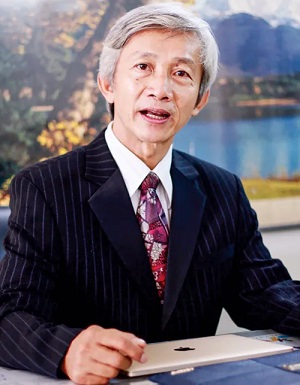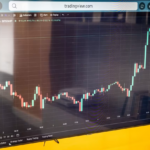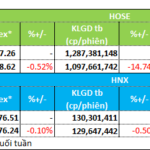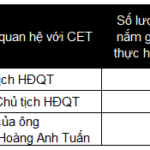In Vietnam, many experts and associations share the same aspirations as MAS, JPMorgan, and BlackRock, advising the government to pilot the formation of a digital asset market and exchange. At this point, digital assets are no longer a speculative game; they are becoming the new lifeblood of the financial world.
Blockchain is electricity, not water.
When a nation decides to open a sandbox to pilot digital assets, it is more than just a technological or financial decision. It is an ideological choice: how does this nation perceive the role of the state in innovation? Should the government lead, regulate, or stand aside and observe?
Last week, the CEO of one of the largest crypto exchanges in the world made a seemingly smooth statement in a Vietnamese newspaper: “Blockchain technology is like water. If blocked at one end, the water will find another path to flow.” This seemingly clever analogy, suggesting that digital asset technology is an unstoppable flow, received much acclaim. However, because it is too smooth, it can deceive policy thinking.

Prof. Dr. TRAN NGOC THO
|
If we replace this image with another metaphor: blockchain is not water – blockchain is electricity. It can bring light, but it can also cause shocks. To develop electricity, no one removes the substation or safety relays. Nor would they hand over the national power grid to a private company just because they are faster and everyone is enthralled with the new trend, fearing that being too slow will result in missing out on opportunities.
The water-will-flow-elsewhere mentality may seem accommodating, but it subtly conveys a hidden message: “If you don’t open up, people will find alternative ways to use it, and any risks will be due to your failure to manage it.” However, if we open all doors just because we fear people taking alternative routes, it would be akin to allowing anyone to build their private power stations and lay their power lines, claiming that it is an evolutionary technology.
Making this point is to highlight that the real question is not whether to develop blockchain in conjunction with digital assets, but whether we can develop it as a safe, fair, and legitimate infrastructure? Or will it become an unregulated power network?
Incorrect analogy, skewed policy.
The CEO is implicitly equating three entities: blockchain, digital assets, and investment behavior. However, the reality is:
– Blockchain is a technological infrastructure. It can serve various sectors, including healthcare, agriculture, education, and insurance…
– Digital assets are highly financialized products associated with expected value and transactions.
– Crypto, such as stablecoins and tokens, are risk pricing units that can be speculative or serve as a substitute for currency.
The CEO might not have conveyed the full intent (of their statement), but using the term “technology” to encompass everything and then concluding that “blocking is futile” is a misleading model aimed at legitimizing the demand for immediate freedom.
Blockchain carries data, trust (albeit sometimes loosely), and sometimes financial value equivalent to money. Unlike drinking water or rainwater, it resembles the flow of electricity within the financial system: a high-risk flow that can disrupt the entire system if not properly controlled.
When blockchain touches the financial nervous system, countries like Singapore, Japan, the EU, and even the US, after incidents like FTX and Terra, realize that modern management is not about tightening or loosening but about who has the right to connect this electricity to the formal system and who takes responsibility if this electricity causes explosions, rather than whether to block or not.
Not blockchain but block-trust.
The CEO’s argument also confuses the concept of technology with the financial nervous system. Blockchain can be a technology. But stablecoins, tokens, crypto exchanges, and products like “staking” (saving on the blockchain without bank guarantees) or “yield farming” (a complex form of staking where users can switch between multiple decentralized finance platforms, participate in “liquidity pools,” and receive rewards) …
While claiming to be blockchain, they are actually financial markets disguised as technology. We have witnessed numerous cases of investment schemes disguised as “technology” to attract funds. Technology does not create morality or trust. Only norms can do that. Every click to transact is not just a technical operation but an act of risk allocation and trust.
Allowing electricity to flow freely because it is blockchain technology is like permitting people to connect their wires to the national power grid with the excuse that it is convenient and rapidly developing.
Vietnam needs circuit breakers, not applause.
If we accept the imported argument that “technology cannot be stopped,” our policies will always be reactive: constantly chasing, fixing mistakes, and facing technical accidents without knowing who is truly responsible.
Instead of being swept away by media hype, we need to ask a genuinely serious question: Who is the main entity directing the mindset of these financial currents?
The benefits of blockchain are evident, but they are not a license to issue crypto-currencies – a form of building a bank without permission but without applying Basel standards – or creating a financial ecosystem where promises replace laws. Regulation is not about resisting technology but about countering irresponsibility.
There is a common misconception that management hinders innovation. However, effective management creates a safe space for responsible innovation.
A genuinely sustainable digital asset ecosystem is not a place where the fastest wins, but where everyone can trust that no one is cheating behind their backs.
We may move slowly, but if we do so to ensure the proper installation of substations, prevent electrical shocks, and avoid anyone getting hurt, it is worth the wait. The cost of development lies not in speed but in who bears the consequences if something goes wrong.
Let’s accept the reality: digital assets are a super-fast flow of electricity, not a gentle stream. They require voltage reduction stations, insulation laws, and even energy police if necessary.
Digital assets can become a hub for underground asset transfers and coded diplomacy.
Some optimistic views suggest that establishing a crypto exchange for foreign crypto assets in Vietnam’s International Financial Center could isolate risks from the domestic financial market.
A recent commentary in The Economist painted a vivid picture: today’s digital assets can be likened to a swamp of uncontrollable power. No one truly knows who owns them, why they are issued, or how long the faith in them will last.
If we are not cautious, they will become a hub for underground asset transfers, where digital assets serve not innovation but law avoidance, from money laundering to policy manipulation. This is especially dangerous when a portion of investors seeks to “tokenize” assets or participate in sandboxes by requesting technology privileges to bypass traditional supervision.
The government’s consideration of piloting the issuance and trading of digital assets is a necessary step. However, the most critical question is: who will pilot it, who will be responsible, and what are the boundaries?
Many digital assets are no longer just payment instruments. They are soft passports. Holding a particular crypto-currency means aligning with a specific order. For instance, USD1, a crypto-currency issued by World Liberty, with 80% of the shares owned by the Trump family.
Notably, governments like the UAE, Kyrgyzstan, Malaysia, and Pakistan have purchased USD1 as a soft link to Trump. These are no longer financial markets; they are a form of diplomacy coded through wallets rather than embassies.
Solution: Not managing for development but developing for management.
Despite the complexities of digital assets, we need to establish a clear stance: it is not about managing digital assets to foster development but about developing them within a manageable scope of the emerging powers. Let’s avoid these four mistakes:
1. Viewing digital assets as a technological issue rather than a financial power dynamic. All digital assets are a mechanism for organizing trust. When this trust is not managed in a balanced and intelligent manner, fiscal and monetary policies will become ineffective.
2. Conducting sandboxes without policy audits. If sandbox proposals only require attractive dossiers but fail to demonstrate social objectives, systemic risk management capabilities, and long-term compliance, we create an innovative alliance without order.
3. The market expects sandboxes with clear and transparent regulations, not experimental free-for-alls.
4. Delaying the establishment of a coordinating body between the State Bank, the Ministry of Finance, the Ministry of Justice, the Ministry of Public Security, and the Ministry of Science and Technology.
Each ministry perceives digital assets through a different lens, but the power is not evenly distributed: a single crypto company that monopolizes data and capital has already surpassed the regulatory reach of the entire system.
Conclusion
A prohibitive mindset, especially regarding digital assets, cannot persist in the technological era. However, neither can we open all doors and claim to embrace innovation, daring to try, daring to do, and daring to take responsibility.
Like importing food, we don’t just check for chemicals; we also verify the source. With digital assets, the source is not in the blockchain but in the power structure that issues them.
|
Like importing food, we don’t just check for chemicals; we also verify the source. With digital assets, the source is not in the blockchain but in the power structure that issues them. |
Prof. Dr. TRAN NGOC THO, University of Economics Ho Chi Minh City
“Regulator and Large Financial Institutions’ Involvement Makes the Digital Asset Market More Efficient, Says SSI’s Director.”
“The crypto market in Vietnam is currently dominated by individual investors, with almost 100% of transactions originating from this demographic. Major institutions like Dragon Capital, VinaCapital, and SSI have yet to fully engage in asset management roles within this space. ‘When this changes, the market will mature and become more regulated,’ says Thomas Nguyen, SSI Securities’ Overseas Markets Director.”
The Global Leap for Vietnamese Fintech: Opportunities Abound
Fintech is revolutionizing the global financial industry, leveraging cutting-edge technology and financial services to deliver convenient and efficient solutions to users. By harnessing the power of innovation, fintech is transforming the way people interact with their finances, making it more accessible, secure, and user-friendly than ever before. With a focus on convenience and efficiency, fintech is leading the charge in the financial world, offering a seamless experience that meets the evolving needs of customers worldwide.













































